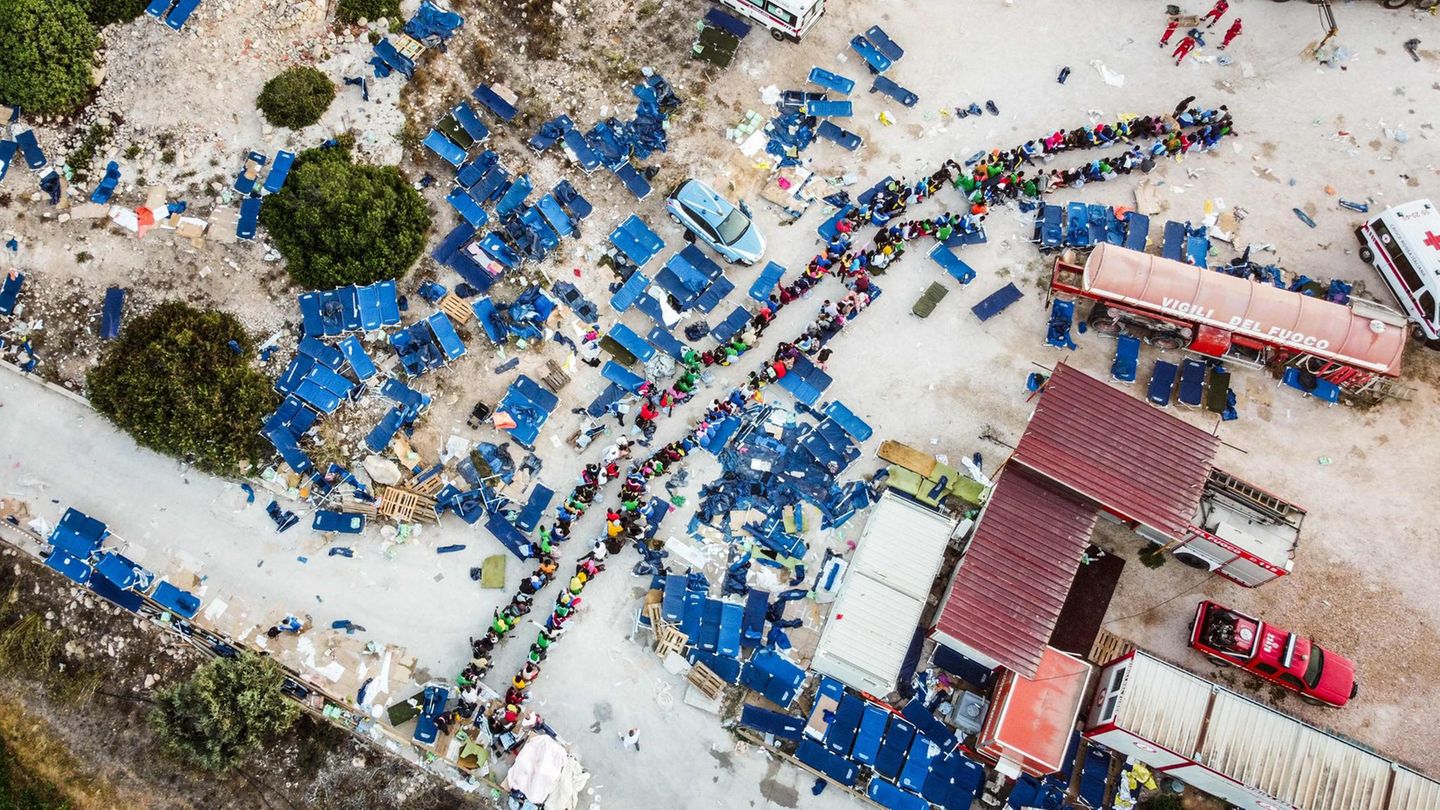The planned reform of EU asylum law is approaching the home stretch. An important component: asylum centers at the external borders. Will they actually limit immigration, including to Germany?
Another core element of the EU asylum law reform is in place: the member states have resolved final differences over the crisis regulation, which provides for significantly stricter measures in the event of a particularly high volume of migrants. On Wednesday, all EU states agreed on a compromise, as the Spanish Council Presidency announced ().
The reform of the Common European Asylum System (CEAS) is now approaching the home stretch. Following the agreement at the government level of the EU states, an agreement on the reform project should now be reached with the European Parliament as quickly as possible. In principle, the plans for the EU asylum reform provide for numerous additions and tightening measures in order to limit unwanted migration.

Very close
Are you interested in politics? – and read the most important information of the week, selected for you by our Berlin politics experts!
Not only Interior Minister Nancy Faeser sees European solutions as the most effective means of combating irregular migration, Chancellor Olaf Scholz (both SPD) also has high expectations of the “historic” asylum law reform. An important component of the plans: In the future, asylum procedures should be carried out at the external border so that migrants without much prospect of staying can be returned more quickly. Normally, they should be allowed to be held in reception centers for up to twelve weeks under prison-like conditions.
But is the restrictive approach also effective? The number of refugees in Germany is unlikely to drop significantly as a result, says migration researcher Gerald Knaus.
“What the reform claims to change already exists”
At least not as currently planned. It is completely unclear what should happen after the planned rapid proceedings. “Such procedures only make sense if you are able to bring people very quickly to their country of origin or to a safe third country,” says the expert star. That is currently not the case.
This means that it is most convenient for countries like Italy if the refugees move on to Europe quickly – and do not wait in Lampedusa until their status is clarified. The migration researcher therefore believes it is unrealistic that the countries bordering the Mediterranean would hold large numbers of asylum seekers from Tunisia, Bangladesh, Egypt and other countries in large border camps. “And therefore this will probably never be implemented as planned,” says Knaus.
The discussion about EU reform reminds him of Hans Christian Andersen’s fairy tale “The Emperor’s New Clothes,” says Knaus: So much time was put into the reform in Brussels “that the member states today don’t want to say that this emperor is actually naked is.” Essentially, the plans would not bring about any important changes and therefore would not contribute to solving pressing problems.
So no major breakthrough at EU level? “What the reform claims to change already exists,” Knaus waves off. “Quick procedures are not against the refugee convention, nor are procedures at the border.” Without countries of origin that take back their citizens or safe transit countries, such procedures would simply not achieve anything. “It is not clear how this would change the current situation, neither for Germany nor for other EU states.”
Source: Stern
I have been working in the news industry for over 6 years, first as a reporter and now as an editor. I have covered politics extensively, and my work has appeared in major newspapers and online news outlets around the world. In addition to my writing, I also contribute regularly to 24 Hours World.




